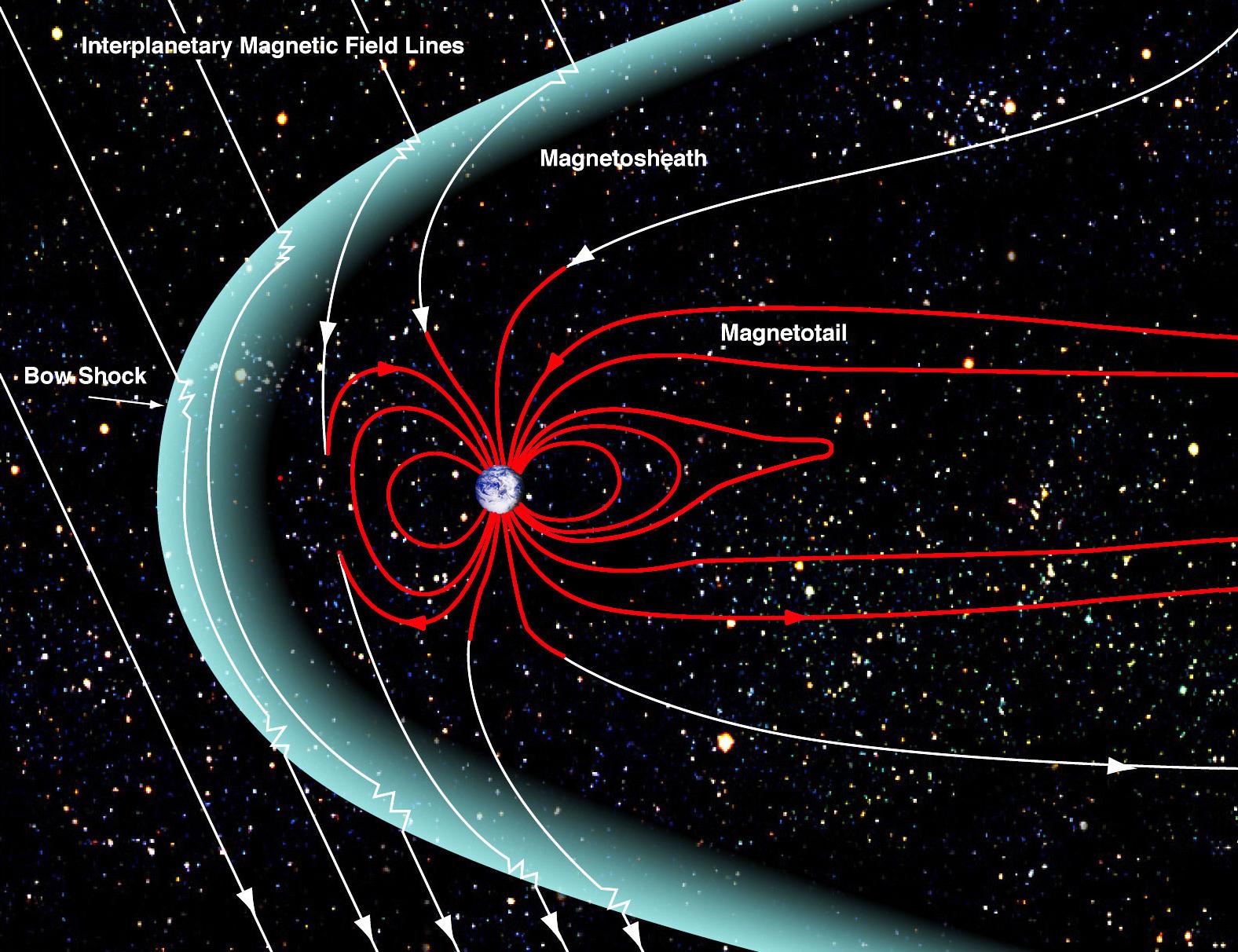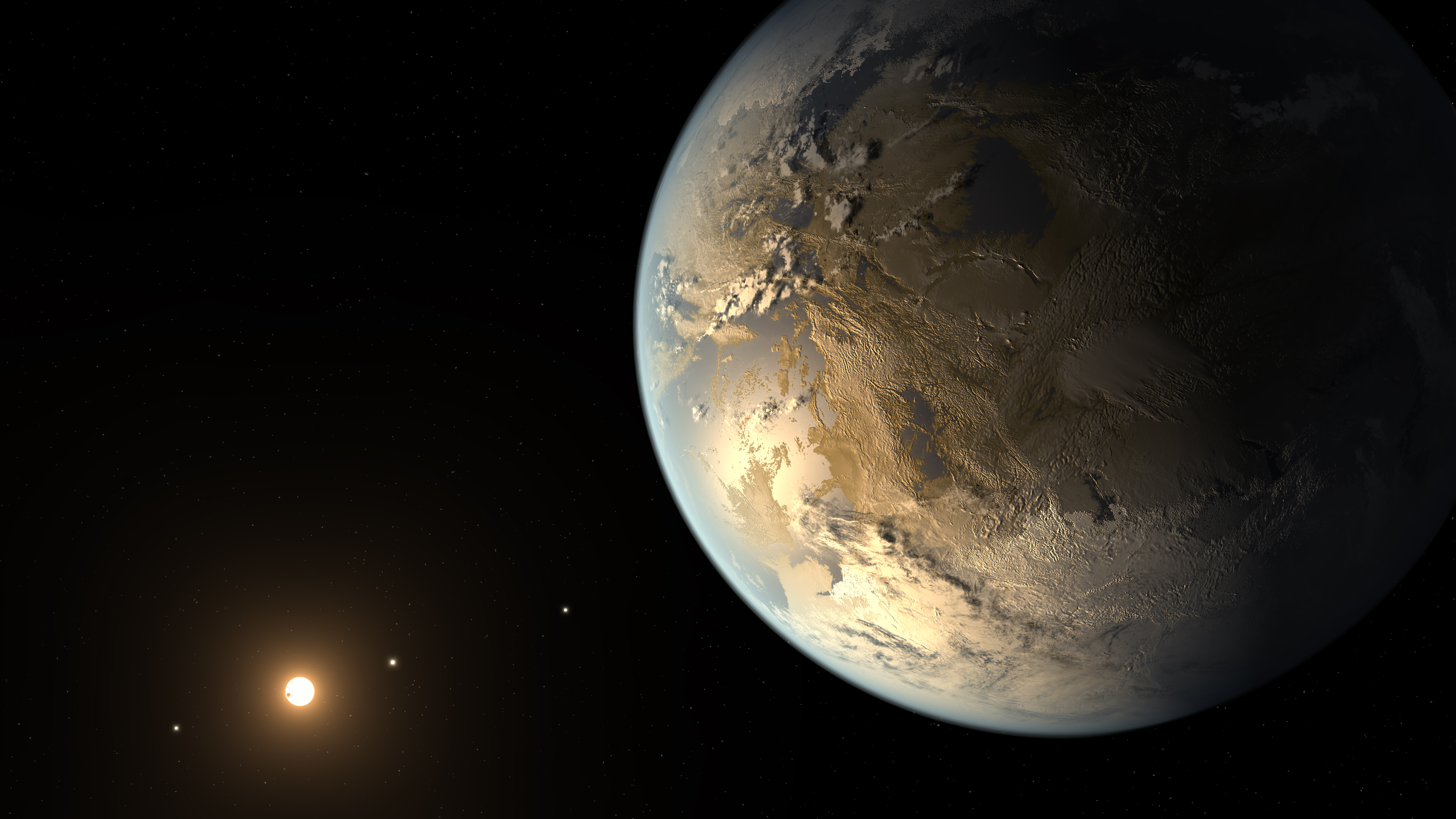Earth, an Extraordinary Magnet for Life
We might take it for granted, but our planet’s magnetic field is no sure thing. A just-published research paper by three Australian astronomers shows that a strong, long-lasting magnetic field is essential for the survival of advanced life and that such magnetic fields must be extremely rare among rocky extrasolar planets.1
Magnetic Field Benefits
Earth has sustained a strong magnetic dipole (North and South Pole) moment for at least the past four billion years of its history. Such has not been the case for Earth’s companion rocky planets: Mars, Venus, and Mercury. Mars and Venus possess no measurable internal magnetic field and no magnetosphere. Mercury’s magnetic field is only 1 percent the strength of Earth’s magnetic field. Its magnetospheric cavity is 20 times smaller than Earth’s. Furthermore, Mercury’s magnetic field is often extremely leaky.2
Earth’s magnetosphere deflects charged particles in the solar wind away from Earth (see figure 1). It also acts as a protective bubble shielding life on Earth from both deadly solar and cosmic radiation.

Figure 1: Earth’s Magnetosphere. Exposure to deadly radiation occurs beyond the outer red lines. Image credit: NASA
Earth’s magnetosphere not only protects Earth’s life from deadly radiation, but also prevents solar particles from sputtering away much of Earth’s atmosphere. It is particularly critical for maintaining liquid water on Earth’s surface. Without that liquid water, life cannot survive on Earth.
Exoplanet Magnetic Fields
Since a strong, long-lasting magnetic dipole moment is so critically important for life, and especially for advanced life, the astronomical team set out to determine just how likely it is that Earth-like planets outside the solar system will possess such a magnetic dipole moment. They used a mathematical model developed by physicists Peter Olson and Ulrich Christensen3 to estimate magnetic dipole moments for all known rocky exoplanets. The researchers assumed that these exoplanets had convection-driven planetary dynamos and then modeled the maximum possible magnetic dipole moments for each of these exoplanets. Given these parameters, they found that half of the rocky exoplanets—at distances from their host stars where liquid water could conceivably exist on their surfaces—had negligible magnetic dipole moments.
Only one of the exoplanets, Kepler 186f (see figure 2 below), could possibly have a magnetic dipole moment as large or larger than Earth’s. Kepler 186f was the first discovered planet with a diameter roughly similar to Earth’s orbiting another star at a distance where liquid water could conceivably exist on its surface.

Figure 2: Artist’s Conception of the Kepler 186 System. Kepler 186f is in the foreground. The host star Kepler 186 is the bright dot at lower left. The other four known planets of Kepler 186 all orbit Kepler 186 closer than does Kepler 186f. Image credit: NASA/Ames/SETI Institute/JPL-Caltech
However, Kepler 186f is not a candidate for hosting life. It orbits an M-type star with a mass = 0.54 times the Sun’s mass and a luminosity = 0.05 times the Sun’s luminosity. M-type stars, unlike stars as massive as the Sun, spew out frequent deadly flares.
Because Kepler 186f orbits such a dim star, its surface temperature in the absence of an atmosphere containing abundant greenhouse gases is only -85°C (-121°F), which would make it a little colder than Mars. For Kepler 186f to possibly possess liquid water on its surface, it would need to have an abundance of carbon dioxide in its atmosphere at least 1,300 times greater (if accompanied by 10 times as much nitrogen as Earth’s atmosphere presently possesses), and at least 13,000 times greater (if accompanied by negligible nitrogen in its atmosphere), than what presently exists in Earth’s atmosphere.4 Such a thick atmosphere of carbon dioxide and nitrogen may not rule out microbial life, but it would rule out the possibility of animal life.
The conclusion that Kepler 186f may possibly possess a magnetic dipole moment as strong as Earth’s assumes that Kepler 186f rotates about as rapidly as Earth does. This assumption is unlikely given that the tidal interaction between Kepler 186f and its host star is about 21 times stronger than it is between Earth and the Sun. Because of this tidal interaction, there is a 50 percent chance that Kepler 186f is tidally locked. Tidal locking means that Kepler 186f’s rotation period is the same as its orbital revolution period of 130 Earth days. If Kepler 186f is not tidally locked, its rotation period most probably will range from 10–100 Earth days. A rotation period of 10–130 days would generate day-night temperature differences that would rule out the possibility of plant and animal life. It would also rule out the possibility of a strong, enduring magnetic field.
Rare Earth
The three astronomers conclude their paper by noting that “planetary magnetism is an important factor” for determining the possible habitability of any exoplanet.5 Their calculations establish that, for rocky planets, a magnetic dipole moment strong enough and long-lasting enough to make life as advanced as plants and animals possible must be extremely rare.
Earth’s magnetic field now ranks as additional evidence for the rare Earth doctrine, the conclusion that Earth is rare, if not unique, in possessing all characteristic features necessary to make possible the existence of advanced life. The sum total of the known features and the degree to which each must be fine-tuned yields a powerful argument that the cause for all these fine-tuned features is a super-intelligent, supernatural Being.
Featured image: Computer Simulation of Earth’s Magnetic Field in a Period of Normal Polarity. Image credit: NASA
Check out more from Reasons to Believe @Reasons.org
Endnotes
- Sarah R. N. McIntyre, Charles H. Lineweaver, and Michael J. Ireland, “Planetary Magnetism as a Parameter in Exoplanet Habitability,” Monthly Notices of the Royal Astronomical Society 485, no. 3 (May 2019): 3999–4012, doi:10.1093/mnras/stz667.
- Bill Steigerwald, “Magnetic Tornadoes Could Liberate Mercury’s Tenuous Atmosphere,” NASA Goddard Space Flight Center (June 2, 2009), https://www.nasa.gov/mission_pages/messenger/multimedia/magnetic_tornadoes.html.
- Peter Olson and Ulrich R. Christensen, “Dipole Moment Scaling for Convection-Driven Planetary Dynamos,”Earth and Planetary Science Letters 250, nos. 3–4 (October 30, 2006): 561–71, doi:10.1016/j.epsl.2006.08.008.
- Emeline Bolmont et al., “Formation, Tidal Evolution, and Habitability of the Kepler-186 System,” Astrophysical Journal 793, no. 1 (September 20, 2014): id. 3, doi:10.1088/0004-637X/793/1/3.
- McIntyre, Lineweaver, and Ireland, “Planetary Magnetism,” 3999.





